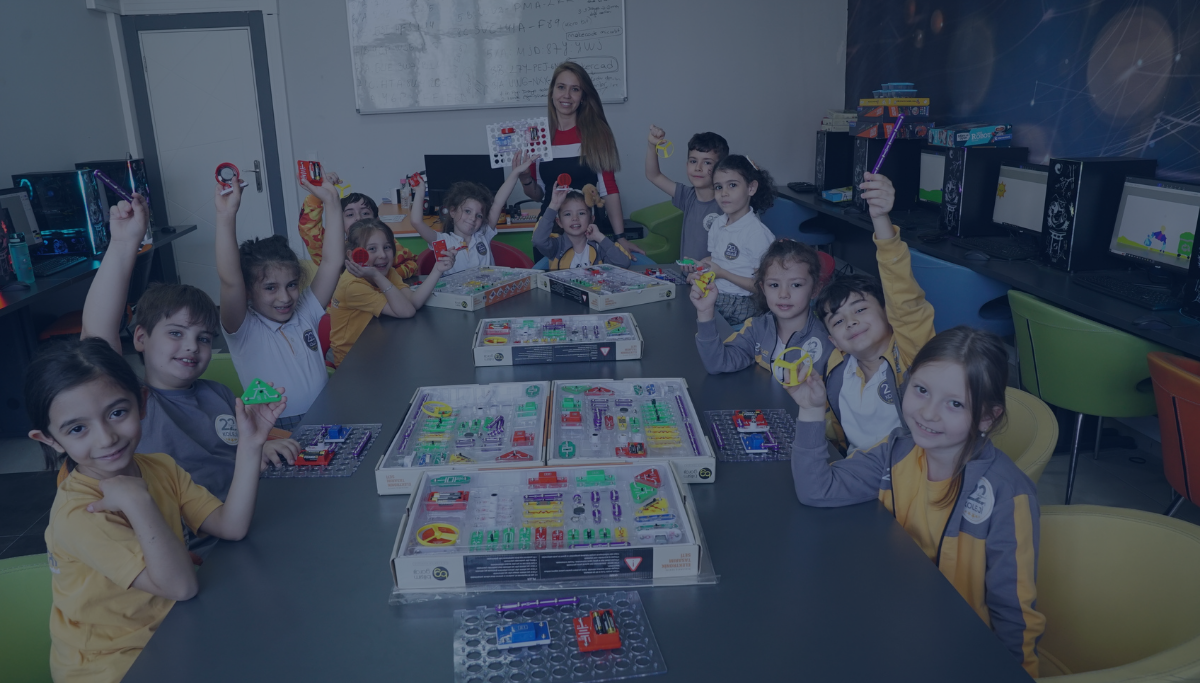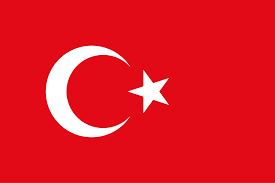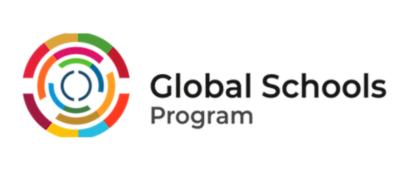Teaching Methods and Techniques

- QUESTION AND ANSWER TECHNIQUE
It is a teaching technique based on answering, discussing and explaining a series of pre-prepared questions by students in the classroom. This technique increases students’ interest in the subject, gives them the habit of thinking collectively, develops listening, speaking and discussion skills in accordance with the rules of etiquette. The questions asked to the students should disturb the student, the answers given should not be classical and stereotyped answers. The questions asked should be thought-provoking and appropriate for the purpose. Students should be given enough time and equal opportunities. This technique can be applied in certain parts of each lesson. - PROBLEM SOLVING TECHNIQUE
Since the problem solving technique directs the student to the solution, its educational power is very high. The teacher should ask clear and understandable problems. Students try to understand the problem by analysing it. They try to establish a connection between what is given and what is required. It is almost impossible to solve problems that are not well understood. If the result is wrong, it is ensured that other methods are tried by going back to the beginning again. Problem solving technique increases the power of thinking and interpretation. The problems given to the students should be suitable for the purpose. - READ ALOUD TECHNIQUE
Reading aloud is the utterance of words or clusters of words that are perceived by the eye and comprehended in the mind with the help of speech organs. In order for this type of reading to be complete and successful, it is necessary to comprehend the meaning of the text and to adjust the voice in terms of tone and emphasis. Since the main purpose of reading is to grasp the meaning, word forms should be grasped at the same time with their meanings. Meaning is the most important element of reading as it serves both to recognise the special forms of the word and to benefit from the development of the word. Among the types of reading, reading aloud is the most instructive, especially in the first grades. The first condition of reading aloud is to say the words perfectly, to read as if speaking in accordance with the natural and standard language, and reading as if speaking is considered a natural result of understanding. The technique of reading aloud teaches reading, helps to recognise the reading level of the students, helps to awaken the development of the mind in the listeners. - SILENT READING TECHNIQUE
Silent reading is reading done only with the eyes without moving any of the vocal organs, without moving the body head. It is a faster reading type than reading aloud.
Silent reading provides the opportunity to grasp the meaning very quickly. It is a very necessary reading skill and habit for the future. Silent reading skill is acquired after reading aloud. Starting with reading aloud in the first learning, equal time is allocated to reading aloud and silent reading in the following years and more time is allocated to silent reading in the following years. Silent reading should be made a habit in students and it should be ensured that it is continued outside the school. By giving documents that will attract the attention of the students, the teacher ensures that this behaviour is acquired. - DEMONSTRATION TECHNIQUE
Demonstration technique is a technique used mostly in the acquisition of physical skills. The teacher shows the action step by step, explains it, the students watch them carefully and do them, and repeat them until they reach a sufficient level. Since the demonstration technique is a very permanent teaching technique for students, it has a great place in active learning. With this technique, 100% learning is provided. Because students learn by seeing, hearing and touching, it has a permanence effect. - BRAINSTORMING TECHNIQUE (Osborn)
It is a group discussion technique in which individuals express their ideas freely without worrying about being criticised. Brainstorming supports the presentation of different ideas, so that a large number of different ideas are produced in a short time. In the application of this technique, the number of ideas is more important than the quality of the ideas. By applying this technique, groups produce a large number of ideas in a fast process on a specific subject in a more creative way. Ideas are collected and listed in a way that combines the knowledge, experience and advanced views of those in the group, and those that can be used from the resulting list of ideas are selected. All suggestions are accepted and listed, no suggestion is criticised, free expression of ideas is encouraged, suggestions continue to be put forward until all ideas are put forward, ideas are categorised, similar ideas are grouped with the acceptance of the suggestor, suggestions are developed with the acceptance of the suggestor.
– Generating a large number of ideas in a short time.
– Generating ideas without judgement or criticism.
– Developing problem solving and imagination.
– The main aim is to produce originality, creativity and different ideas.One Problem + Short Time + Many Ideas + Zero Criticism + Original Solution
(You will come to the class with the problem, you will explain the problem to the class, you will tell them that they have a very short time for their ideas. You will ask them to write their ideas on paper. You will write the information on the board but you will not criticise. In this way, you will find an original solution.)Brainstorming Sub Techniques
1. Reverse Brainstorming: The student produces ideas by thinking like someone else.
2. Utilising Similar: The student creates a situation similar to a situation by emulating it (inspired).
3. Making Idea Connection: The student creates an original whole by combining different situations.
4. Making Benefit from Harm: The student transforms discarded (idle – i.e. about to be thrown away) materials into a useful tool. - EXPEDITION TECHNIQUE
All sense organs are used. Learning is provided from primary sources. In other words, information does not come to us, we go to information. It is a technique that includes planned, compulsory activities with educational value and target. In other words, if the student is not going to attend, he/she should get permission or report. The aim is to complete school and class work and to establish a relationship between the school and the environment:
All trips require written permission.
Behaviour standards are taught to students before the excursions.
As soon as the trip is over, an evaluation meeting is held. - OBSERVATION TECHNIQUE
It reveals students’ research tendency. It provides learning by doing – experiencing. Students observe and take notes of events and objects in real life or artificial environment within a plan.Warnings:
Some observations require legal permission.
Observation is divided into two.
1. Natural Observation (without intervention)
2. Indirect Observation (Intervention) - EXPERIMENT (LABORATORY) TECHNIQUE
It is a controlled and planned activity in proving scientific problems in reaching information about objects, events or phenomena. It is not economic. It is functional in the transformation of theoretical knowledge into practice. Acquisitions related to scientific sensitivity are in the foreground:
The experiment is done in two ways.
Demonstration Experiment: Theteacher does the experiment, students watch.
Student Experiment:The teacher does the experiment first and then the students do it. - DEMONSTRATION TECHNIQUE
It is a technique used to show how a job is done or to support the expression process. The teacher is active. Therefore, it is not effective in learning social skills. Economical. It is possible to learn by seeing and hearing. - ROLE PLAYING
It is a technique that enables individuals to express their own feelings and thoughts by assuming another identity.
In role-playing, the individual gets rid of his/her real role and emotions and puts himself/herself in the place of someone else.
It allows the development of empathy.
The subject is animated according to a certain scenario. If it was handled, it would be a case study.
The most important feature is scripted animation (it is clear who will do what). - DRAMA (IMPROVISATION REVIVAL)
It is a teaching technique that enables students to learn by experiencing how they should behave in which situations, develops students’ productivity and creativity, and makes students active. It allows gains in cognitive (affective / cognitive) areas.
Creative Drama: It achieves goals with improvisation.
Formal Drama: The characteristics of the characters are in the scenario, the dialogue and the course consists of improvisation.
Apart from these two types of drama;
1. Educational Drama: It is used for educational purposes.
2. Psychodrama: Used for psychological treatment.
3. Sociodrama: Used for social analysis.Common Features of Role Play and Drama
1. Develops creative, empathic and reflective thinking.
2. Improves verbal and non-verbal communication.
3. Holistic learning is provided.
4. Provides active participation.
5. It makes the lesson interesting and fun.
6. In small classes, roles should be distributed according to gender.
7. In the beginning, timid students should be given small roles suitable for their characters. - SPEECH CIRCLE
It is a technique applied to see the differences of opinions of the students, to aim to be respectful to each other’s opinions, to gain empathy skills by creating an environment of trust and respect in the classroom. If the question asks empathic questions to the students seated in a circle, starting with ‘If it were you’, the answer is the speech circle. Students gain the skills of effective speaking, listening, self-confidence, respect, empathy, and the ability to say no. - STATION TECHNIQUE
The station technique is used to create a common product by collectively addressing a subject from various angles.
To complete the work left unfinished.
To reveal communication skills and special talents.
Gaining the habit of working in co-operation is taken as a basis.
It consists of 2 to 8 stations.
The activity centre is set up before the children come to class.
The more stations there are, the more groups are formed.Application Stages:
1. The subject is determined: The subject that each student can participate in, which is suitable for group work is determined. The opinions of the students are also taken in the selection of the subject. The subject is written on the board.
2. The class is organised: Tables are placed in the middle of the classroom, far away from each other, in a way that they can move cyclically. The station is written on the tables (story, drama, slogan, etc.). The materials and instruction papers that the students will use in the application are placed on the tables. The class is divided into groups as many as the number of stations.
3. The technique is applied: The leader gives the groups a certain time to complete the tasks so that the groups alternately go around all the tables and do the given tasks:
Students develop the habit of working together.
It reveals students’ special talents.
It develops students’ creativity.
Students learn to adapt and contribute to a work started. - SIX HAT THINKING TECHNIQUE (Edward De Bono)
The student learns how to think. In other words, it systematically teaches students to think in many ways. This is called Lateral Thinking . It develops critical and versatile thinking, empathy and decision-making skills. It provides to analyse the thinking activity by putting it in an order. Hats and Thoughts:1. White Hat: Clear, objective, impartial, expresses with numbers, does not comment, gives information. First to speak.
2. Red Hat: Emotional, subjective, the person who starts by saying ‘I think/I am’.
3. Black Hat : Pessimistic, critical, pessimistic.
4. Yellow Hat : Optimistic, can bring advantages and benefits (positive), polyanism.
5. Green hat : Creative, original.
6. Blue Hat : Evaluating, deciding, summarising, last to speak (controlling). He/she compiles and summarises all the previous five speakers. Therefore, he/she is the last one.
Cognitive and affective gains are at the forefront. It is ineffective in the cognitive area. - SIX SHOES PRACTICE (Edward De Bono)
It is used in the sharing of applications. In other words, it provides versatile application skills. (Lateral Application) Creativity (Mental) and empathy (Affective) develop, there are psychomotor gains. In the situations encountered, 2 applications are required (2 different shoes are worn)1: Routine work, official procedures and rules are applied.
2. Grey (Suspicion) Sneakers: Evidence collection, research, investigation, examination, use of evidence.
3. Brown (Earth) Walking Shoes: Utilising initiative, flexibility.
4. Orange (Flame – emergency precaution danger) Firefighter Boots : Danger, emergency response, ensuring safety.
5. Pink (Comfortable) House Slippers : Motherhood, sincerity, protecting people, being sensitive, hospitality.
6. Purple (Power/Authority) Riding Boots (holding the reins): It represents authority, acting officially and with authority. It is the decision-making phase. He/she is the last to apply. - MICRO TEACHING
It is not the real classroom… we pretend.
It’s a teach, reteach cycle.
It is used to train candidate teachers.
Acquisitions are realised at the application level.
The aim is to train reflective teachers (Thinking + Doing + Learning from what you do).
Students gain practical teaching experience by lecturing to each other in a short lesson time (10-15 minutes) with a small number of students.
The biggest limitation is that there is no real classroom atmosphere. - SIMULATION – ARTIFICIAL ENVIRONMENT CLOSE TO REALITY
It can be underestimated by students.
In cases where it is difficult, dangerous and costly to train students with real tools, it is a way of learning from the model of reality.
There is immediate feedback and correction throughout the process. Reinforcements are used.
It develops the skills of decision-making, practice and taking responsibility.
It is especially used in cannon, first aid, drill, aviation and space, traffic and military training. - EXHIBITION TECHNIQUE
It is used together with the project method. It is a technique in which the products that students produce during the learning process are evaluated and shared. The products are both evaluated and shared with others. - INTERVIEW TECHNIQUE
It is a technique in which information about the learning subject is obtained from specialised people. The whole class is not going. If the whole class goes, it’s an excursion. A few people go.
Learning is provided by establishing a dialogue with the person who has information.
The environment is realistic and impressive. - JIGSAW TECHNIQUE:
All groups learn the same unit. The unit is divided into 5-6 parts and each member of the team works on one part of the unit.
Students from different groups who study the same subject come together to form specialisation groups and learn their subjects in detail.
They return to their old groups and teach their subjects to their friends. - OPPOSITE PANEL TECHNIQUE
For the application of this technique, students should have knowledge about the topic of discussion. For this reason, this technique is usually applied in the repetition of previously learnt subjects. However, it is also possible to apply it on a subject for which the students are already prepared.
For example, it can be used at the beginning of the lesson, during the review of the previous lesson. It is a particularly useful technique for summarising previously covered topics.
The aim of the contrasting panel is to attract the students’ attention and to make the topics that have been partially discussed but not sufficiently clarified more understandable.
Implementation Steps:1. A leader/manager is selected while applying the technique.
2. The class is divided into two. One of the groups is a question group and the other is an answer group.
3. The subject to be discussed is announced to the class.
4. The question group prepares the questions they will ask and the answer group prepares the answers to the questions they think can be asked.
5. The groups are given 10-15 minutes for this study and the application starts at the end of the time.
6. The groups are asked to prepare the determined number of questions and answers.
7. The questions are answered, if the answers are not qualified to answer the questions, the question is answered from the text, thus arousing interest. - THE SYNECTIC TECHNIQUE
It means bringing together parts that are not related to each other. This activity, which is based on analogy ‘transferring ideas to another medium’, is a practice studied in depth by Gordon. Three different analogies are specified for synectic applications:
Direct Analogy: It is the comparison of two objects or concepts by simplifying them.
Personal Analogy: The student is asked to put himself/herself in the place of an object or a living being.
Reverse Analogy: The student is asked to make use of the opposite, opposite meanings of a concept or expression and is expected to strengthen the meaning.
 Türkçe
Türkçe
 English
English



